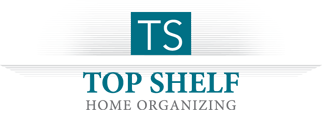 We have researched tips and tricks on how to create and maintain an organized office to increase your productivity. An organized office includes a system to manage information and an environment that encourages productivity. You can create a comfortable and organized workspace to make your work time more productive and enjoyable. Here are some of our favorite tips.
We have researched tips and tricks on how to create and maintain an organized office to increase your productivity. An organized office includes a system to manage information and an environment that encourages productivity. You can create a comfortable and organized workspace to make your work time more productive and enjoyable. Here are some of our favorite tips.
Workspace
Your work environment is so important to your productivity. How the space feels to you and where items are located affect the quality of your workspace.
Lighting
Consider a well-lit workspace. If natural light is not an option, look for lighting that mimics that of natural light. Be generous on the quantity and location of light fixtures. Also consider the type of light bulbs you install. While fluorescent and LED light bulbs are more economical, those sensitive to this lighting may consider traditional incandescent lighting or warm colored LED bulbs.
Desk Location
Place your desk or work surface in an area that embraces productivity instead of distractions. You may not want to sit where passersby are tempted to stop to chat, or where noises are a distraction. If you have a home office, your most productive place is likely not in the kids’ playroom. Instead consider a room that is relatively far away from the family action.
Office Equipment
Have your work equipment in a location that is convenient, but not necessarily on your desktop. Equipment that is used frequently throughout the day should be placed near your workspace. Computer and phone are located on your desk. If you do a lot of video conferencing, your camera should be on your desk ready to go. If you do a lot of scanning, keep your scanner near your desk. Needing to run to another room or another floor to retrieve a print out will have an impact on your productivity. Other frequently used equipment should be placed on a separate piece of furniture nearby, or where it can be easily accessed.
Storage
If you are a visual person and tend to create piles on your desktop so that you know right where things are, consider open shelving for your files. If you feel most productive when things are tucked away out of site, then a file cabinet system will work well for you. Either system should be well-labeled so that everything has a place and retrieval of information is easy. Other office basics are important to your workspace, as well. These basics include a good sized trash can and recycle container, a supportive chair, right-sized desk or work surface, and containers to corral office supplies such as pens, pencils, tape, stapler, paperclips and notepads.
Information Management
Information management, traditionally referred to as paper management, is best completed by a structured system in place to receive, store and reference all the information that comes to you. A structured information management system works if your information is primarily in paper form, digital form or a combination. Similar management systems are set up to manage paper and digital information. Keep in mind that you want to have current projects and information accessible, while past projects and information can be filed away. This will free up space for what you are working on now, but you will still have past projects organized and accessible for future reference.
When you receive information, have an initial place for this information to go. There are five categories for this initial storage system. This system works for emails, physical papers and digital information. This initial storage system is designed to hold information for a few days to up to a month depending on the pace of your work.
- Follow Up
This file is where you place information that needs to be addressed in the near term. This file is addressed during a scheduled time you allocated to follow up on these items. You may need to allow for this time daily, weekly or even monthly. Sub files can be created based on the timeframe required for each action. - To Do
This file is very similar to your to-do list. This is where you place items that have a deadline and cannot be overlooked. This may include membership renewals, client follow ups, etc. This file may also include emails and publications that you wish to unsubscribe from. This file may also be called “Waiting on Response,” if your workflow is dependent on others to respond or complete tasks. - To Read
This file is where you place items that you intend to read and absorb at a later time. These items do not necessarily have a deadline, but instead are items of interest to you. This file is designed to prevent you from getting distracted by an interesting article when you are in the process of completing other tasks. - To Pay
This is the file where you place items that have to be paid by a certain date. This can include vendor invoices, utility bills, credit card statements, etc. This file is kept separate from the to-do file since it involves money, and timely payment is important due to budgets and due dates. - To File
A file designated to items that need to be filed is also important. This is where you place items that have been addressed, but eventually need to be filed for long-term storage. This includes physical files, digital files and emails. - Long-term
A long-term file is where information that needs to be saved can be archived. When you receive an email or piece of mail that can go directly into longer term filing, set up a system that does this for you automatically. Emails can be automatically labeled and filed without any additional work on your part.
Be Consistent
Setting up a consistent filing system for the long-term files is very important. For example, if you have file folder on your hard drive or in the cloud for storing client invoices, you will likely have an email file for the same client. Naming these similar files in a consistent way will make retrieving information much more efficient. If you have an invoice from Top Shelf Home Organizing, you might consider creating a file titled “Top Shelf Home Organizing” on both your drive and your email. If you identify your clients with a contract number, consider utilizing the contract number in your file naming convention. The important point here is to keep the naming convention consistent across physical files, digital files and email files.
IF setting up and/or maintaining a productive office environment and structured filing system is overwhelming, consider having an office assistant or a professional organizer help you. See if Top Shelf Home Organizing can help you get your next organizing project started and completed. Contact Jayme to schedule a consult or chat about organizing.
